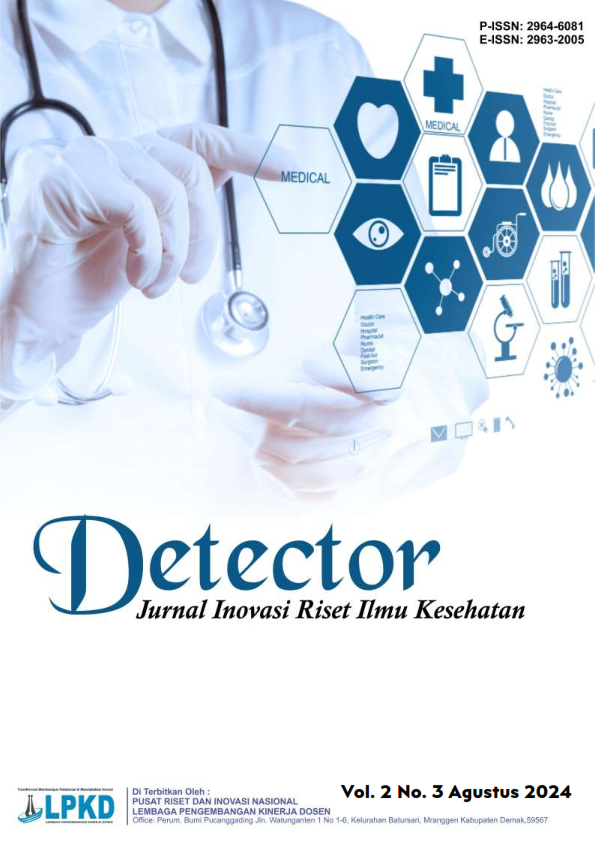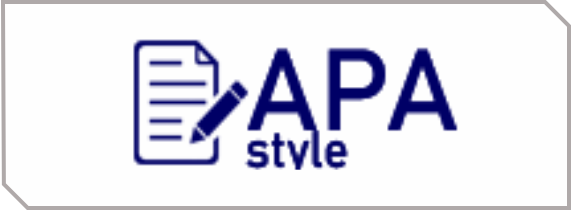Gambaran Kompetensi Mahasiswa Rekam Medis dan Informasi Kesehatan Universitas Esa Unggul
DOI:
https://doi.org/10.55606/detector.v2i3.4139Keywords:
student capacity, medical record capacity, medical recordAbstract
Knowledge is the result of curiosity through the process of perception, especially the sense of sight and hearing of certain objects. The D-III Medical Records and Health Information Study Program is a program that prepares students skilled in managing health information management. The aim of the research is to determine the competency description of Esa Unggul University Medical Records and Health Information students. Descriptive research method with a quantitative analysis approach. The population in this study were Esa Unggul University Medical Records and Health Information students from the 2020 and 2019 regular and parallel classes with a total of 94 students. Research results: the characteristics of the majority of students were female (73.6%), student age ≤ 22 years (63.7%), the largest campus base was regular Kebon Jeruk (51.6%), the largest class of 2020 (73.6%). The results for competency in Clinical Classification Skills, Codification of Diseases and other Health Problems, and Clinical Procedures showed that the percentage of competent was 51.3%, while the percentage of incompetent was 48.7%. Competency in the Application of Health Statistics, Basic Epidemiology and Biomedicine obtained a competent percentage of 49.9% while the percentage of incompetent was 50.1%. RMIK Service Management Competency obtained a competent percentage of 50.3% while the percentage of incompetent was 49.7%. Conclusion: The number of competent Medical Records and Health Information students was 55 students and 36 students who were not competent. Suggestion: Registration officers improve and understand more in serving and conveying more precise and clear information. It is recommended to maintain and improve the quality of learning and increase student learning motivation in order to increase the percentage of competency.
Downloads
References
Andhika, S., Floristia, S., & Alawiyah, T. (2020). Pengaruh jarak tempat tinggal dengan kampus terhadap kosentrasi belajar mahasiswa di kelas. Natural Science: Jurnal Penelitian Bidang IPA dan Pendidikan IPA, 6(1), 22.
Budiarti, E. A., & Masturoh, I. (2022). Gambaran pengetahuan petugas unit rekam medis tentang penyusutan dan pemusnahan dokumen rekam medis di puskesmas kota Tasikmalaya. Media Informasi, 18(1), 13–19. https://doi.org/10.37160/bmi.v18i1.42
Dharmawati, I. G. A. A., & Wirata, I. N. (2016). Hubungan tingkat pendidikan, umur, dan masa kerja dengan tingkat pengetahuan kesehatan gigi dan mulut pada guru penjaskes SD di Kecamatan Tampak Siring Gianyar. Jurnal Kesehatan Gigi, 4(1), 1–5.
Donsu, J. D. T. (2017). Psikologi Keperawatan. Pustaka Baru Press.
Filayeti, A. N. (2019). Hubungan pengetahuan tentang stunting dengan karakteristik mahasiswa preklinik Fakultas Kedokteran UIN Syarif Hidayatullah Jakarta.
Garmelia, E., Lestari, S., & Golo, Z. A. (2021). Tinjauan efektifitas kerja penanggung jawab rekam medis (PJRM) di bangsal perawatan sesuai dengan kompetensi perekam medis dan informasi kesehatan (PMIK). Jurnal Manajemen Informasi Kesehatan Indonesia, 9.
Harmadi. (2021). Pengantar demografi. Analisis Data Demografi, 1–48.
Indonesia, P. (2003). UU No.20 Tahun 2003. Acta Pædiatrica, 71, 6–6. https://doi.org/10.1111/j.1651-2227.1982.tb08455.x
Iskandar, S., Prichilla, R. P., Elly, N., Harmanto, D., & Bengkulu, P. K. (2022). Tinjauan pengetahuan petugas rekam medis tentang retensi dan penyusutan berkas di Rumah Sakit Rafflesia Bengkulu. 54–60.
Kemenkes. (2020). Kepmenkes No.312 Tahun 2020. 2507(1), 1–9. https://doi.org/10.1016/j.solener.2019.02.027
Lestari, T., Wujoso, H., & Suryani, N. (2017). Pengaruh metode pembelajaran ceramah plus dan metode drill terhadap motivasi belajar dan hasil belajar pada kompetensi dasar efisiensi penggunaan tempat tidur rumah sakit. 7.
Notoatmodjo, S. (2010). Metode Penelitian Kesehatan. Rineka Cipta.
Nuryati, N., & Rokhman, N. (2013). Strategi implementasi kurikulum inti program. Jurnal Manajemen Informasi Kesehatan Indonesia, 1(2), 18–25. https://jmiki.aptirmik.or.id/index.php/jmiki/article/view/46
Octaviana, D. R., & Ramadhani, R. A. (2021). Hakikat manusia: Pengetahuan (Knowledge), ilmu pengetahuan (sains), filsafat dan agama. 5(2), 143–159.
Purnamayanti, N. P. D., & Artini, I. G. A. (2020). Pengaruh karakteristik sosiodemografi terhadap tingkat pengetahuan tentang swamedikasi OAINS pada mahasiswa Universitas Udayana. Jurnal Medika Udayana, 9(1), 12–17. https://ojs.unud.ac.id/index.php/eum/article/view/57216
Supendi, P. (2016). Variasi (format) sistem pendidikan di Indonesia. Almufida, 1(1), 159–181. http://jurnal.dharmawangsa.ac.id/index.php/almufida/article/view/110
Syahputra Wiguna, A., & Fahrani, A. (2019). Tingkat pengetahuan petugas rekam medis terhadap pelaksanaan penyusutan dan pemusnahan berkas rekam medis di Rumah Sakit Umum Madani Medan tahun 2018. Jurnal Ilmiah Perekam dan Informasi Kesehatan Imelda (JIPIKI), 4(1), 537–544. https://doi.org/10.52943/jipiki.v4i1.74
Vinka, R., Mathar, I., & Lestari, H. E. P. (2021). Tinjauan kompetensi petugas rekam medis dalam pelayanan kesehatan di RSU Darmayu Ponorogo tahun 2021.
Widyaningrum, E. A., Admaja, W. W., Astuti, L. W., & Masyriqoh, B. (2021). Pengaruh usia dan jenis kelamin terhadap pengetahuan serta perilaku penggunaan suplemen di masa pandemi pada mahasiswa IIk Bhakti Wiyata. Majalah Farmasetika, 6(Suppl 1), 49. https://doi.org/10.24198/mfarmasetika.v6i0.36675
Wulandari, A., & Permata, M. (2016). Hubungan tingkat pengetahuan mahasiswa farmasi ISTN terhadap tindakan swamedikasi demam. Sainstech Farma, 9(2), 7–11. https://ejournal.istn.ac.id/index.php/saintechfarma/article/view/65
Downloads
Published
How to Cite
Issue
Section
License
Copyright (c) 2024 Detector: Jurnal Inovasi Riset Ilmu Kesehatan

This work is licensed under a Creative Commons Attribution-ShareAlike 4.0 International License.








